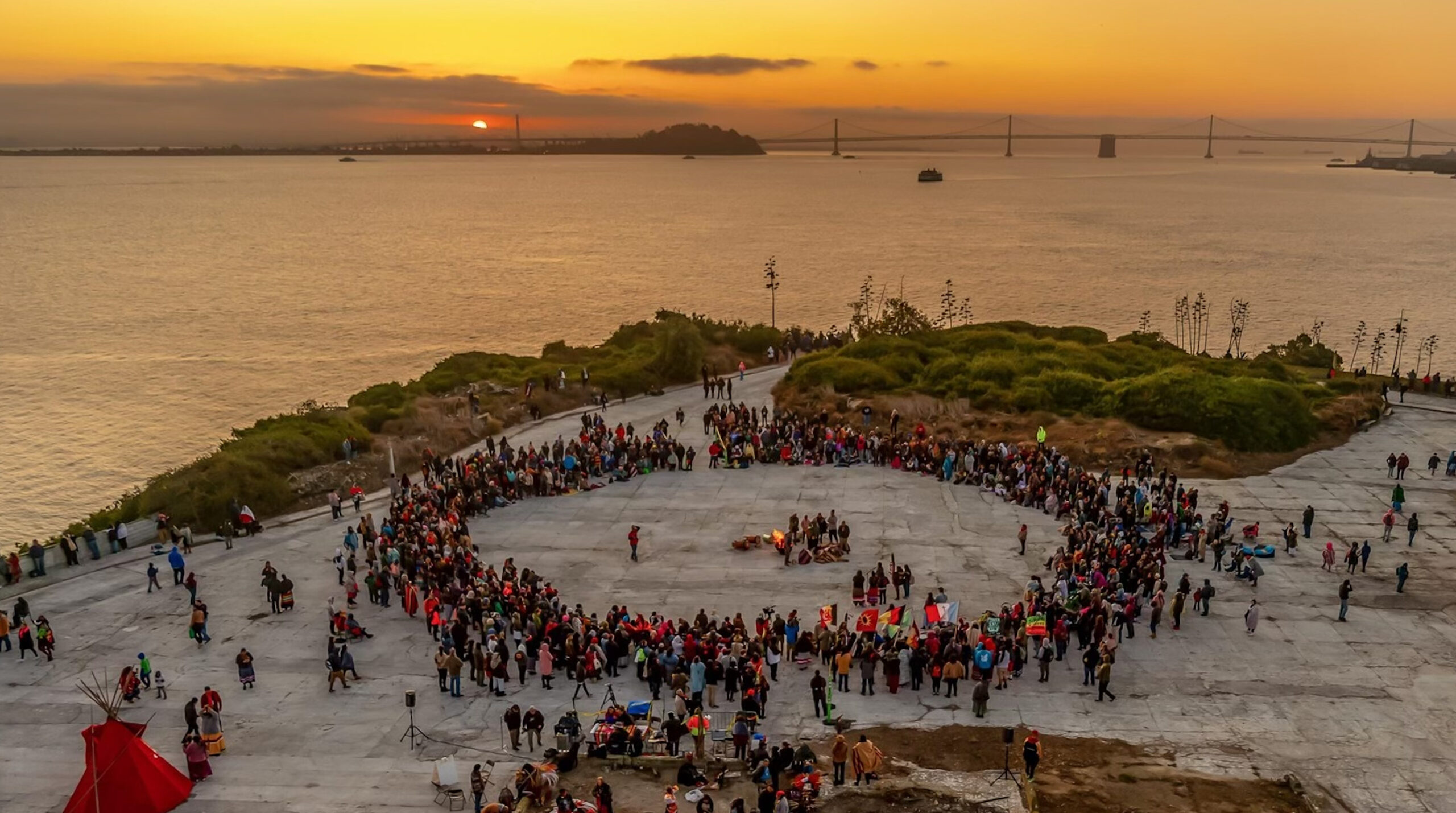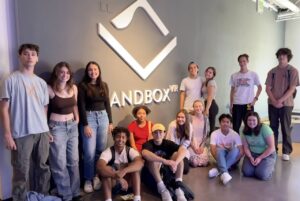
photo by Alison Taggart-Barone, National Park Service
In her book, “Viral Justice: How We Grow the World We Want,” author Ruha Benjamin calls for an examination of common sense assumptions and urges us to understand the origins and genealogies of much of what we adopt unquestioningly. Using this logic, the celebration of Thanksgiving as an American holiday, a symbol of gratitude, reflection and the sanctity of home and family must be explored more deeply, and perhaps even understood through a different lens.
Thanksgiving has become a holiday tradition that draws from happenings in Plymouth, Massachusetts in 1621, when the Wampanoag tribe supposedly welcomed the “courageous” pioneering pilgrims to a celebratory feast. In both Canada and America, family and friends gather for a meal and other celebrations on Thanksgiving.
The so-said origins of this holiday: a peaceful and celebratory meal between the pilgrims and the Native people, is not only extremely pervasive but also riddled with historical inaccuracies. This dominant myth perpetuates the notion that Indigenous people willingly conceded to colonialism and extends the ideology of Manifest Destiny. So while there’s nothing inherently wrong with a celebration of gratitude and family, building a just society calls for a critical consciousness shaped by untold stories.
Consider, for example, that the holiday is actually a time of mourning and healing for some Indigenous groups like the Wampanoags, who remember the pilgrims’ entry to their homeland as a day of loss and destruction. Frank James, one of the leaders of the Wampanoag nation, explained his perspectives on the holiday in a 1970 speech. “It is with mixed emotions that I stand here to share my thoughts. This is a time of celebration for you — celebrating an anniversary of a beginning for the white man in America. A time of looking back, of reflection. It is with a heavy heart that I look back upon what happened to my People.”
When the pilgrims landed at Plymouth in 1620, the Sachem (chief) Ousamequin offered the new arrivals an entente, primarily as a way to protect the Wampanoags against their rivals, the Narragansetts. For 50 years, the alliance was tested by colonial land expansion, the spread of disease and the exploitation of resources on Wampanoag land. Then, tensions ignited into war. Known as King Philip’s War (or the Great Narragansett War), the conflict devastated the Wampanoags and forever shifted the balance of power in favor of European arrivals.
This brutality exhibited towards Indigenous people is only a small example of the genocide that the United States of America was founded on. Morning Star Gali is the Community Liason Coordinator of the International Indian Treaty Council (IITC). “We disparage this American myth that Thanksgiving was this great celebration between the settlers and our Wampanoag relatives. We emphasize that it was truly a massacre, so violent to the point where Native people were willing to ‘make peace’ because they were simply starving entering the winter months,” she said.
The Thanksgiving myth doesn’t address the deterioration of this relationship culminating in one of the most horrific colonial Indian wars on record, King Philip’s War. It also doesn’t address Wampanoag survival and adaptation over the centuries, which is why they’re still here, despite the odds.
In Gali’s words, “This is the time of year when we’d plant and gather our traditional foods. They would have foods that centered around the 3 sisters: corn, beans and squash. For the Indigenous foods that we would be growing at the time to be turned into gluttony, an emphasis on taking and not giving. When settlers were arriving to our land, [these foods were] what we shared with them. It is really sad that what this holiday has turned into has really been extracted from not only our traditional values but our traditional foods.”
It is eye-opening to realize that the holiday spread that we see appear on so many tables also has its roots in Indigenous culture and foods, yet the acknowledgment, is absent.
The erasure of this history in any conversation about this holiday is really the problem. This highlights our tendencies for selective memory and ongoing inability to acknowledge the harm done to and contributions of Indigenous people.
“We have opportunities for us to tell the truth in the history of what occurred to Indigenous people, of dispelling those myths around Thanksgiving. I have four children of my own, ages 9 to 19, and it’s been a constant battle of educating educators surrounding the true history of Thanksgiving, and how that continues to affect Indigenous lives today” Gali said. “When the holiday is appropriated, it contributes to the erasure and invisibility of Native peoples, those who continue to live on the land and steward it. We’re still very much here and present.”
As a community that strives for justice and equity, what can we learn from these contradictions? How do we move towards a true spirit of solidarity? How do we cultivate a culture where all these stories can be told so we can develop a new collective consciousness?
Nathan Rivera ’24, Lick-Wilmerding High School Student Inclusion co-Chair described the importance of individuals doing the work of bringing the true Thanksgiving history to light. “If you feel comfortable, call people in, and be as specific as possible: tell them what they said, and why it was damaging,” he said. “There’s always more you can learn and know, especially by listening to Indigenous voices and activists. It’s imperative that we listen to their voices, not only during Thanksgiving, because we are constantly on their land.”
National Public Radio (NPR) recently published an article titled “How To Talk To Kids About Thanksgiving,” calling for the need to examine the many histories sharing the holiday. In it, Bettina Washington, the Wampanoag tribal historic preservation officer, talks about the importance of acknowledgment. “It’s not a pretty history by any stretch of the imagination, but we need the story to be told truthfully,” she said.
Gali thoughtfully added to this sentiment. “We’re not saying for anyone not to take this time to spend with their family or reflect on the year with gratitude, we ourselves would have been celebrating the hard work that had been committed to having enough food to store for winter and survive towards this time,” she said.
Do we have to abandon the holiday altogether? No. Can we preserve the spirit of the holiday? Yes. But can we continue to perpetuate the inaccurate understanding and erasure of Indigenous realities on which the holiday was built? Absolutely not. Gali said it best: “As a California Native American woman, every day is a fight against invisibility, every day is a fight against erasure because that is the dominant narrative.”







